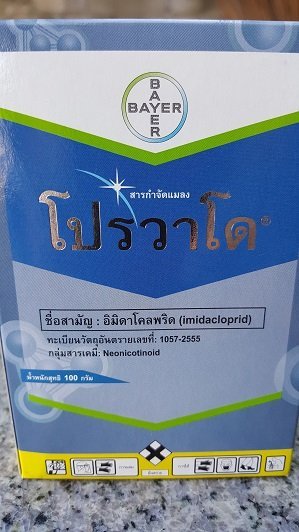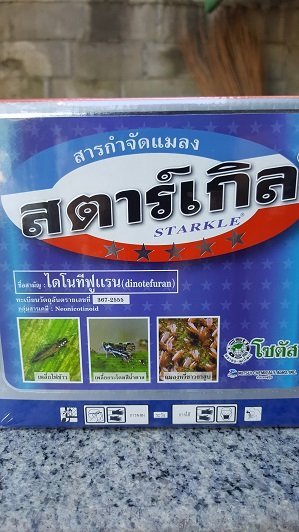
drtreelove
Advanced Member-
Posts
1,935 -
Joined
-
Last visited
Contact Methods
-
Line
0
-
Website URL
www.fertileearthlandcare.com
Profile Information
-
Location
Chiang Mai and San Francisco
Previous Fields
-
Location
Chiang Mai and SF Calif
Recent Profile Visitors
12,961 profile views
drtreelove's Achievements
-
More information would be needed for help with plant selection. Location? I'm not sure what examples you will find much driving around "everywhere and nowhere" . Irrigation? A lot will depend on whether the screening you envision will have water or not. Without irrigation, consider solid fencing or shadecloth on the fence structure. Fence structure and height? If irrigated, do your privacy plantings need to grow above the fence height, or would a vine growing on the fence structure be adequate? Rangoon creeper is a beauty. Coral vine is more massive and requires a large solid fencing structure for support. Bouganvillea is a flowering favorite; it's thorny and impenetrable for security purposes, but needs space to ramble, or otherwise needs frequent pruning maintenace. For taller plantings, bananas and bamboo are relatively easy to maintain and are fast growing. Dwarf 'gluai-nam-wa' bananas are a favorite of mine for fast growing, fast fruiting, beautiful green privacy screening within a year. Palm groupings are another possibility. Most shrub hedgerow plantings are highly unnatural and high maintenance, and are one of the most frequent calls that I get for long term problems. https://www.thaigardendesign.com/plant-lists/
-
SoiDog2, Where ya been? African Baobab country I guess? Mature baobabs are a unique and iconic tree. That's a healthy looking seedling. Vitamin C? Never heard that one. How do you get up there to collect the leaves? How's the farm in Issan and your tree collections? Me and a baobab tree, Kruger Park SA 2002.
-
Pretty good ai response, Although from experience, depending on the depth of the sunscald, the underlying fruit can be affected with rapid browning.
-
Yes, sunscald is probably correct. Maintain shading of the fruit as well as the soil surface to prevent loss of moisture in the soil and the plant tissue hydration. Dried tissues will burn more easily. Deep water adequately during the dry season, Mulch the soil surface for retention of soil moisture. Nutrition matters! Biofertilization provides nutritional support for plant heath and resistance to environmental impacts.
-
The "white stuff" on the cocoa trees was probably mealy bugs or powdery mildew. Either/both are easy to control and certainly it was horrible advise to unnecessarily cut them down.
-
Bad idea in my opinion. You may get a chemical treatment recommendation because that is what they are obligated to sell and that is the only thing they know. The shop will not likely know the importance of the cultural factors, growing condtions, soil and water management that are all-important for building plant health and natural resistance to pests and diseases.
-
From the one photo of the tree trunk, this looks like an accurate pest assessment. There is not a lot you can do about advanced plant pest and disease conditions of any kind. Just like with human health, preventive wellness program is the key. In our small hobby farm in Chiang Mai with one rai/55 mango trees, this stem borer was prevalent. It wasn't an aggressive tree killer, the beetle-borers don't form extensive galleries that cut off sap flow like some other bark beetles that I deal with. But I did implement a successful monthly routine with application of a preventive insectide barrier. Pyrethroids are my chemistry of choice for bark beetle prevention (permethrin, bifenthrin, cypermethrin). I used Permethrin 10% which was available at that time from a local MaeJo ag shop. But the highly available household insecticide/termiticide Chaindrite Stedfast 30 SC with bifenthrin will have the longest residual activity. You may be able to get three or four months. The pyrethroid solution is absorbed by the tree bark and provides a barrier for borer entry. It will also help to prevent termite activity/mud-tubes on the tree trunk. For this specific application, I would double the normal rate of 30ml/liter, to 60. Mix in a small handheld sprayer and spray to wet the lower tree trunk until the point of run-off. Spray when there is a mimimun of 4 hours dry period from rain or sprinklers. This is not a foliar canopy spray, just the lower stem. The other photos of the entire young tree show a relatively healthy foliar canopy. There is some lower foliage with fungal leaf spot, anthracnose, and/or insect pest holes. Prune that out and provide better nutrition with complete organic fertilizer, soil surface mulching or cover cropping, and good water management during the dry season. I hope you didn't remove the tree for these superficial factors. Sorry I only look at this forum once a month or so now.
-
I don't have direct experience growing Tamarind, but I know it is a fairly large growing tree, so give your seedlings plenty of space. In my opinion, "see if they survive" is not a good attitude for growing any plants. Instead, be sure that they survive and thrive by learning as much as possible about the plant and the natural habitat and ideal growing conditions. Provide good soil fertility, soil surface protection (mulching, shading, cover cropping) and most important - good water management. See if they survive severe drought stress, or over-watering.
-
I don't know Pattaya but HomePro, Global House, ThaiWatsadu and other home improvement superstores usually have it in the garden section. The plant shops outside in parking lot areas of some HomePros often have it too, as well as ag specialty shops in farming areas. My two satang as an organic program advocate, is to avoid repeated use of high NPK, high salt index chemical fertilizers. They may jack green growth that looks good, but do not supply complete plant nutrition and do not contribute to long term soil and plant health. High salt index chemical fertilizers like 15-15-15 dessicate roots, kill the all-important beneficial soil organisms, and create internal plant biochemistry that attracts pests and disease. If you go that route and find your NPK fertilizer, pick up some insecticide and fungicide too, you will need it. Or go instead with complete organic fertilizer like that from Organic Totto, Best Garden State, or Maruchu Bussan.
- 1 reply
-
- 1
-

-
Hip Joint replacement Surgery in Chiang Mai.
drtreelove replied to NORDO's topic in Health and Medicine
Dr James Huddleston at Stanford Joint replacement center, Redwood City CA and Stanford Hospital, Palo Alto. He's done thousands. And the Stanford team and new hospital are awesome. Mine was five years ago and I couldn't be more pleased and grateful for a "new lease on life". I've been pain-free, in my 70s I do outdoor physical work, hike and mt bike. There are many good docs for this in Calif and the US and its a very much in-demand surgery, with considerable waiting times for appointments at the most popular clincs. Medicare plus an AARP United Health Care 'supplement' covered 100% of my bilateral titanium hip replacements. That's why I went back to Cali for this. But unless you have existing Medicare coverage in place, you will have to go through the "open enrollment' process during Jan - March. And then the supplement policy enrollment. Once your medicare coverage is secured, you will need a "primary care physician" to refer you to a specialist. Then the orthopedist appointment, mine was a three month wait just for first exam at Stanford, then the surgery appointment was another 3 month wait. Second hip was done 6 months later. So over a year to get it all done. With DOGE cutting SSA staffing I don't know how Medicare enrollment is being affected. Recovery was remarkably smooth, especially compared to my previous knee replacements. The prescribed physical therapy I found lame and boring, so I ditched the appointments and did my own. Being as healthy as possible and not over-weight will make it all much easier. -
I need a fungicides that works
drtreelove replied to billaaa777's topic in Farming in Thailand Forum
Insecticides are only a short term fix. Repeated use will be detrimental to the beneficial soil biology and important metabolic functions. Focus on good growing conditions, soil fertility and water managment which promotes plant health and reduction of pests and disease. Healthy plants don't get pests. -
As the topic says Pets in Thailand
drtreelove replied to still kicking's topic in Plants, Pets & Vets in Thailand
-
That's an awesome dream! But - "100% shaded for about 8 months annually" This amount of shade is a very limiting factor for your dream garden. But there may be some hope: https://www.gardeningknowhow.com/special/shade/tropical-shade-gardening.htm https://www.google.com/search?q=tropical+plants+for+full+shade&rlz=1C1CHBF_enUS914US914&oq=tropical+plants+for+deep+shade&gs_lcrp=EgZjaHJvbWUqCAgBEAAYFhgeMgYIABBFGDkyCAgBEAAYFhgeMg0IAhAAGIYDGIAEGIoFMgoIAxAAGIAEGKIEMgoIBBAAGIAEGKIEMgoIBRAAGIAEGKIEMgoIBhAAGIAEGKIE0gEKMTU4MzNqMGoxNagCCLACAfEFJrPrEhXpA9nxBSaz6xIV6QPZ&sourceid=chrome&ie=UTF-8
-
pgrahmm has good intentions and good experience with ProAuto and is a Toyota mechanic himself. But I had a disappointing experience there a few years ago. ProAuto is primarily a tire shop. They wanted a lot of time and a lot of money to diagnose a problem that turned out to be a 5 min wiring fix at a Toyota dealer. I recommend Saha Panich, the Toyota dealer on Chotana Rd (Hwy 107) . The service manager named Sarot speaks English and thoroughly knows Toyota's.
-
I need a fungicides that works
drtreelove replied to billaaa777's topic in Farming in Thailand Forum
Not a fungus infection. It appears to be a mealy bug infestation (a very common sucking insect pest). If so, you can reduce the population numbers significantly by washing them off with a strong water spray. And/or wipe them off with a rag or cotton gloved hand. If not on food plants, you can use a systemic insecticide soil drench. The insecticide will be taken up through the roots and translocated throughout the foliage, so that the sucking insects ingest the chemistry and die. Insecticide contact sprays have limited effectiveness because mealy bugs have a waxy protective coating that prevents chemical contact. The most effective systemic insecticide will be a neonicotinoid class of pesticide, like dinotefuran active ingredient (Starkle in Thailand) for extremely fast uptake and kill, but limited residual effectiveness. Or imidicloprid active ingredient for slow uptake but one year or more residual effectiveness. Consider using both. Improving soil fertiity and plant nutrition will help the plants build natural resistance to pests and disease. Use of high NPK, high salt index chemical fertilizers are a pest magnet. I hope that helps, Don











.jpg.c023eb01f106090874a6c10d89a97a88.jpg)

.jpg.2e918c84f5dd2b440e0c38bf86c46701.jpg)








